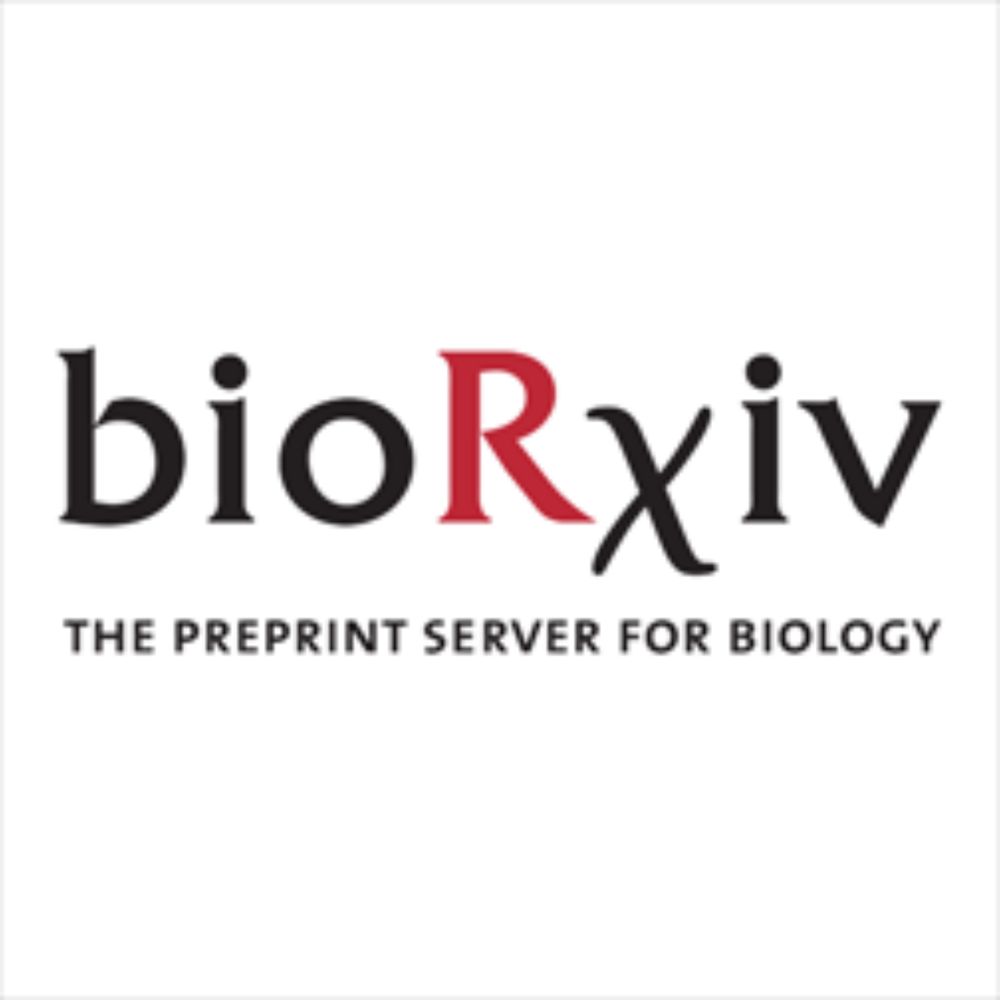This preprint closes a long development phase…
but opens a new frontier: morphology as a quantitative, molecularly anchored measurement modality.
If this resonates with your work, we’d love to connect.
Thanks again to the entire team and looking forward to exciting new IRIS adventures 🚀!
02.12.2025 14:17 — 👍 5 🔁 0 💬 0 📌 0

IRIS also revealed that subtle nuclear morphologies correspond to distinct molecular states, including the previously puzzling T cell stripy nuclear phenotype (collab. w/ @BerendSnijder's lab; Hale et al., Science, 2024), now shown to map to a specific transcriptomic program.
02.12.2025 14:17 — 👍 2 🔁 0 💬 1 📌 0

We also show that IRIS enables prediction of transcriptomes directly from images (#ML). Models trained on IRIS data recover gene-level variation, cell-cycle phase, and cell identity from morphology alone.
02.12.2025 14:17 — 👍 0 🔁 0 💬 1 📌 0
We uncovered phase-specific TF activity, revealing how DREAM complex repression, FUCCI intensity, and cell-cycle speed are linked. IRIS detects quiescence-primed vs fully quiescent states & shows that slowly cycling cells display stronger DREAM-mediated repression, insights missed by RNA-only tools.
02.12.2025 14:17 — 👍 1 🔁 0 💬 1 📌 0

As a 1st application, we used IRIS to profile >5k FUCCI-3T3 cells, reconstructing the full continuous #cell-cycle from morphology + RNA; identifying 670 cycling genes. IRIS’s morphology-anchored cell-cycle angle aligns with Seurat/Tricycle but provides smoother, higher-resolution structure.
02.12.2025 14:17 — 👍 0 🔁 0 💬 1 📌 0

IRIS solves a long-standing gap: #imaging and droplet-based sequencing were never truly connected at single-cell resolution. Here, every cell is imaged first (BF + 4 fluorescent channels) → then deterministically barcoded → then sequenced, enabling single cell #phenomics.
02.12.2025 14:17 — 👍 0 🔁 0 💬 1 📌 0

Overview of Integrated Robotic Imaging and Sequencing, IRIS
We just released IRIS (7+yrs project), a tech we believe will transform cell biology by pairing high-resolution cell images with matched #scRNAseq, letting us interpret cellular form by its molecular ground truth.
Huge tx to @JohannesBues, @JoernPezoldt, @CamilleLambert et al.
shorturl.at/zgY8Z
02.12.2025 14:17 — 👍 46 🔁 14 💬 2 📌 2

(1/13) Excited to share the outcome of the IBIS Challenge! The IBIS challenge united dozens of teams across the world in tackling the problem of modeling transcription factor (TF) binding specificity using a diverse collection of experimental datasets for understudied human TFs.
18.11.2025 22:54 — 👍 10 🔁 7 💬 1 📌 1
🧵2/ Across 384 TFs and ~40,000 cells, we found:
– Nonlinear, dose-sensitive reprogramming responses
– TFs triggering different fates at low vs high dose
– Same dose, different outcome = hidden complexity
– TF pairs flipping between synergy & antagonism based on dose ratio
06.10.2025 06:57 — 👍 6 🔁 0 💬 0 📌 0

Faculty Position in Life Science Engineering
The School of Life Sciences at EPFL invites applications for a faculty position in life science engineering. Appointments will be at Tenure Track Assistant Professor or at Associate Professor level. W...
Outstanding Faculty opportunity in the broad area of 'life sciences engineering' @EPFL School of Life Sciences, open to both junior and senior researchers. We may prefer metabolism-centric applications but remain open to outstanding applications across domains:
www.epfl.ch/about/workin...
06.08.2025 14:11 — 👍 43 🔁 40 💬 0 📌 2

Design principles of cell-state-specific enhancers in hematopoiesis
Screen of minimalistic enhancers in blood progenitor cells demonstrates widespread
dual activator-repressor function of transcription factors (TFs) and enables the model-guided
design of cell-state-sp...
🚀 study: www.cell.com/cell/fulltex... from @larsplus.bsky.social et al: via enhancer design from scratch, 3 principles emerged: 1) TF binding strength = activation 'or' repression; 2) Same motif ≠ same output in all cell states; 3) 2 activators ≠ activation - combos can repress! #geneRegulation
12.05.2025 09:37 — 👍 8 🔁 0 💬 0 📌 0
Impressive, new snRNA-seq atlas across 8 mouse strains & tissues reveals how genetics shapes cell-type-specific gene expression. A key resource for decoding trait variation, disease mechanisms & guiding mouse model design. #Genomics #SingleCell #PrecisionMedicine. www.biorxiv.org/content/10.1...
05.05.2025 18:21 — 👍 9 🔁 1 💬 0 📌 0
Great opportunity! 🎆
08.04.2025 12:56 — 👍 0 🔁 0 💬 0 📌 0
Science under attack: a growing list of statements from journals
@jama.com
jamanetwork.com/journals/jam...
@plos.org
theplosblog.plos.org/2025/02/plos...
@science.org
www.science.org/doi/10.1126/...
@nature.com
www.nature.com/articles/d41...
@embopress.org
www.embopress.org/doi/full/10....
19.03.2025 12:01 — 👍 53 🔁 36 💬 8 📌 0
Sounds very exciting, very much looking forward!
02.03.2025 14:08 — 👍 0 🔁 0 💬 0 📌 0
Characterization of single neurons reprogrammed by pancreatic cancer - Nature
Nature - Characterization of single neurons reprogrammed by pancreatic cancer
Really cool method 'Trace-n-seq' that allows for the molecular characterization of single neurons that innervate the pancreas and how this is altered in a cancer context at high resolution. www.nature.com/articles/s41...
24.02.2025 20:10 — 👍 30 🔁 2 💬 0 📌 0
wow 🚀! Need to look into the details, but sounds really exciting: Seq-Scope-X --> new spatial transcriptomics & proteomics technology that achieves sub-200 nm super-resolution, surpassing the diffraction limit of optical microscopy by physically enlarging tissues. www.biorxiv.org/content/bior...
13.02.2025 08:00 — 👍 10 🔁 3 💬 0 📌 1
👍
28.01.2025 09:25 — 👍 2 🔁 0 💬 0 📌 0

A new mechanism for cancer-induced immune evasion. We knew about cancer cells hijacking mitochondria. Now we learn about how their mitochondrial transfer to T cells impairs the tumor immune response.
www.nature.com/articles/s41...
www.nature.com/articles/d41...
22.01.2025 16:39 — 👍 299 🔁 66 💬 7 📌 5
Interesting study showing how a heart disease-linked TF, TBX5, regulates 3D chromatin independently of transcription, via structural and cohesin-regulating roles in a dose-dependent fashion www.biorxiv.org/content/10.1...
17.01.2025 06:53 — 👍 11 🔁 0 💬 0 📌 0
Not that I know of, but it is for sure a good idea. Someone simply needs to start it! 💪
11.01.2025 17:44 — 👍 1 🔁 0 💬 0 📌 0
Fully agree with Carlos! Having peers at a similar career stage has been invaluable—building lasting relationships, inspiring great science, and acting as soundboards for new ideas. These connections still help navigate the daily grind of being a PI. So excited to see the JEDI Phoenix rise again! 🚀✨
11.01.2025 09:37 — 👍 3 🔁 4 💬 1 📌 0
PhD student, regulatory genomics, machine learning in biology, algorithms
Scientist at DKFZ and NCT Heidelberg
#epigenetics #stemcells #leukemia #colorectalcancer #multiomics #precisiononcology
#oncofetal #reprogramming
#plasticity
www.translational-cancer-epigenomics.de
Assistant Professor @ Stanford Genetics & BASE Initiative. Mapping the regulatory code of the human genome to understand heart development and disease. www.engreitzlab.org
We are the Ting Wu Lab @ HMS. Our laboratory studies how chromosome behavior and positioning influence genome function, with implications for gene regulation, genome stability, and disease.
Managed by WuLab members
https://www.transvection.org/home
PostDoc@EPFL 🇨🇭 | Product development with phenomic single cell profiling
Theoretical Physics, RNA, Condensates, Evolutionary Biology, Machine Learning, and Ancient History.
Cambridge, UK
Computational brain imaging for cognitive & clinical neurosciences. Data science. Graph signal processing. Happy lab at EPFL and UNIGE.
Associate professor at Boston University | systems biology, gene regulation, viral gene expression 🏳️🌈🇦🇷
Scientist at IMP in Vienna. Excited about gene expression regulation and its encoding in our genomes - enhancers, transcription factors, co-factors, silencers, AI.
Developmental cell biologist exploring epithelial morphogenesis, tube formation, tricellular junctions, and more. Views are my own.
www.luschnig.uni-muenster.de/
Our long-term research goal is to understand and predict gene regulation based on DNA sequence information and genome-wide experimental data.
Dad, bioinformatician, ex-expat. Currently working on transposon bioinformatics & infectious disease genomics.
Stanford BioE, Genetics & Sarafan ChEM-H. Chan-Zuckerberg Biohub Investigator. Our lab develops and applies microfluidic assays for high-throughput biophysics and biochemistry.
Neuroscientist. We study development and maintenance of synaptic connectivity.
Neuropathologist. Director of Anatomic Pathology and Neuropathology at St. Jude Children's Research Hospital.
#Neuropath
Independent group leader @COSHeidelberg, investigating developmental muscle precursor heterogeneity and its impact on lifelong muscle function and regeneration.
https://bageritz-lab.org
CSO & co-founder at vevo.ai | Former UCSF, Goodarzi Lab, Broad, Biogen
Researcher @crg.eu, previous MeissnerLab @molgen.mpg.de. Interested in how cells and genes make embryos. #EMBO & #MSCA fellow














